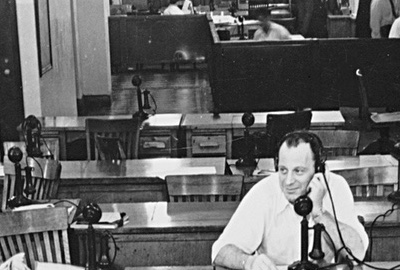 2022-05-08
2022-05-08

History of Philanthropy
- ArticlesandContent.com (CIRCA 2005)
- /
- Oct 8, 2021 (written 2005)
Wealthy business people, politicians, and scions of families with abundant means have often engaged in philanthropic endeavors.
Chief executive officers who find their alma mater foundering financially may begin a fund to pay for operational costs at no expense to the school itself. Movie stars, musicians, and artists who have earned a great profit through community support often give back to help future stars reach their goals. It is important to promote American philanthropy and the history of philanthropy to encourage more funding to reach worthy causes.
The use of the word “philanthropy” is often traced to Andrew Carnegie’s 1889 essay called “The Gospel of Wealth” which sounded the call for responsible savings and donations by the wealthy to charitable causes. The reason why philanthropy’s history is truncated is because the notion of giving money to others without equal compensation in work or services was seen as begging. Traditions of mutual aid societies and fraternal organizations helping their members go back to the Roman Empire. While business philanthropy began in America, it has grown extensively throughout the world.
A Brief Introduction to Philanthropy
According to a recent investigation conducted by ABC’s “20/20, ( HYPERLINK "http://www.realclearpolitics.com" http://www.realclearpolitics.com), the majority of Americans are pretty generous. Their research has determined that seventy five percent of American families give to charity. There seems to be little correlation between a person’s income level and their desire to make charitable gift contributions. On average, most people provide charitable gifts to their chosen causes of at least eighteen hundred dollars annually.
People provide charitable gifts for many diverse reasons and in many different ways. The more affluent contribute to charitable gift organizations not only to take advantage of the many tax incentives for doing so, but often because they are compelled to give back to society. Others, who are not so affluent incorporate charitable gift giving into their lifestyles by volunteering at service clubs, tithing and providing cash contributions to charitable organizations.
What is the Purpose of a Charitable Gift?
Charitable donations are cognizant on many factors. Philanthropy has long been a means of satisfying a personal wish to help others while taking advantage of the tax benefits that ultimately assist the giver.
While contributing to their innate altruistic nature, charitable donations are also a way for most people to ensure their financial contributions are dedicated to a particular organization or community that is near and dear to their hearts.
Establishing and maintaining a charitable gift takes some forethought and planning. Although on the surface it sounds like a simple way to offer a mutually satisfying means of providing a gift that keeps on giving, charitable donations encompass various methods and targets and should be considered very carefully before committing to a particular type or recipient.
The Charitable Gift Annuity
Established in the mid 1800’s by a Boston philanthropist, charitable gift annuities have developed into an accepted means of transferring assets to a chosen charity while still guaranteeing a flow of income that helps to offset taxes.
When the donor sets up a charitable gift annuity, a contract agreement is developed whereby the donor transfers assets to their chosen organization in exchange for the recipient’s promise to pay a proscribed amount to one or two annuitants for life.
This method of charitable donation serves a dual purpose – the donor can establish the donation of funds in their own name (or in conjunction with another individual) to satisfy their desire to assist their chosen target while still being able to realize substantial income reducing deductions on their tax returns.
Based on the government’s table of life expectancies, the donor is eligible to claim a designated portion of each received payment for a designated number of years as a non-taxable return on the investment, which ultimately allows for additional increases in the after-tax amount left over for further investing.
A carefully constructed charitable gift annuity does not necessarily have to be a cash investment. Very often, property is donated under this umbrella that allows donors the opportunity to avoid capital gains taxes.
In addition, some charitable gift annuities can be set up as a deferred payment gift annuity – which means that payment start dates, determined by the donor, are delayed until a specific date. This option offers a very attractive alternative to younger donors as by deferring payments, the initial income tax charitable deduction, tax reserves and the annuity rate are increased, which benefits future incomes such as retirement funding.
What is a Charitable Fund Gift?
Many charitable gift donors practice their philanthropy by supporting particular private, or community foundations by setting up trust funds designed to distribute grants to support causes specific to the donor’s interests.
Private foundations generally consist of a board of directors primarily made up of the founder’s extended family members while community foundations are focused on particular geographic locations. Most of the familiar large foundations such as Rockefeller and the HYPERLINK "http://en.wikipedia.org/wiki/Bill_and_Melinda_Gates_Foundation" \o "Bill and Melinda Gates Foundation" Bill and Melinda Gates Foundation are private foundations, while community foundations are public charities established in various locations across the county and the globe.
While still operating under the auspices of a board of directors, community foundations are widely dependant on specialized funding from other individuals and groups in order to remain solvent. They rely heavily on regular contributions in order to enlarge their asset base and offer assistance to support community altruism.
A charitable foundation is a nonprofit corporation or trust whose principal purpose is to provide grants to distinct organizations, institutions and/or individuals to assist in scientific, educational, cultural or religious pursuits on a humanitarian level.
Charitable gifts can be established via donor-advised funding, whereby the donor recommends grants aimed at assisting qualifying non-profit organizations for specified amounts to be distributed in pre-determined amounts with donor input on time frames and locality. Others are set up as life-time bequests, whereby the recipient (eg: universities) have charitable gifts set up by their donors to “spend down” the initial endowment by providing grant funding until the endowed monies are depleted.
Growth of Philanthropy in America
Business and personal philanthropy has expanded greatly since Carnegie’s article. The 1910’s and 1920’s saw legislation that allowed tax breaks for business people who supplied money to worthy causes. The First and Second World War saw astronomical investments in war bonds by the wealthy that saw it as an investment in postwar prosperity. The figures bear out the rapid increase in business philanthropy in the interwar period. Donations to charities were at a modest $1.7 billion, but this number grew to $4.1 billion by 1949.
Celebrity Philanthropy
There are many celebrities that use their fame and money to support worthy causes. There are actors, sports figures, singers, and business tycoons that give their time and money to causes that they think are important. Celebrity philanthropy raises a lot of money for worthy causes and organizations.
Some of the celebrities that give the most money are Tiger Woods, Barbara Streisand, Martha Stewart, and Rosie O’Donnell. But the celebrity that gives the most money is Oprah Winfrey. Oprah philanthropy efforts include her giving $58.3 million to Oprah’s Angel Network and her Leadership Academy which was recently reopened. Barbara Streisand gave $11.75 million through her Streisand Foundation, and Tiger Woods gave $9.5 million to organizations such as the Tiger Woods Foundation and the Tiger Woods Learning Center. Some other notable celebrity philanthropists are Geoffrey Beene, Brad Pitt, Angelina Jolie, Dwayne “The Rock” Johnson, Carmello Anthony, Elton John, David Geffen, and Arnold Palmer. These are just a handful of people as celebrity philanthropy covers a large group of celebrities.
Philanthropy Today
The use of philanthropy in America has grown in terms of financial scale since the 1980’s. The Reagan Administration used tax cuts to encourage the use of savings by the wealthy to be put back into the system. Companies have turned a generous tax policy over the last two decades to create charitable ventures. Search engine giant Google has turned its Google™ Earth mapping program into a public service through Google Earth outreach ( HYPERLINK "http://earth.google.com/outreach/index.html" http://earth.google.com/outreach/index.html). One of the best-known examples of business philanthropy is the Bill and Melinda Gates Foundation, which has raised billions of dollars for
More From Business
 2022-05-08
2022-05-08
 2022-05-08
2022-05-08
Real Life Railroad Tycoons
 2022-05-08
2022-05-08
3 of the Most Famous Entrepreneurs
 2022-05-08
2022-05-08
Birth Of The Corporation
 2022-05-08
2022-05-08
What Was The Dot Com Bust?
 2022-05-08
2022-05-08
History Of American Business
 2022-05-08
2022-05-08
How Wall Street Began
 2022-05-08
2022-05-08
1929 Stock Market Crash
 2022-05-08
2022-05-08
A Few of the Most Famous CEOs
 2022-05-08
2022-05-08
Famous Career Changes
 2022-05-08
2022-05-08